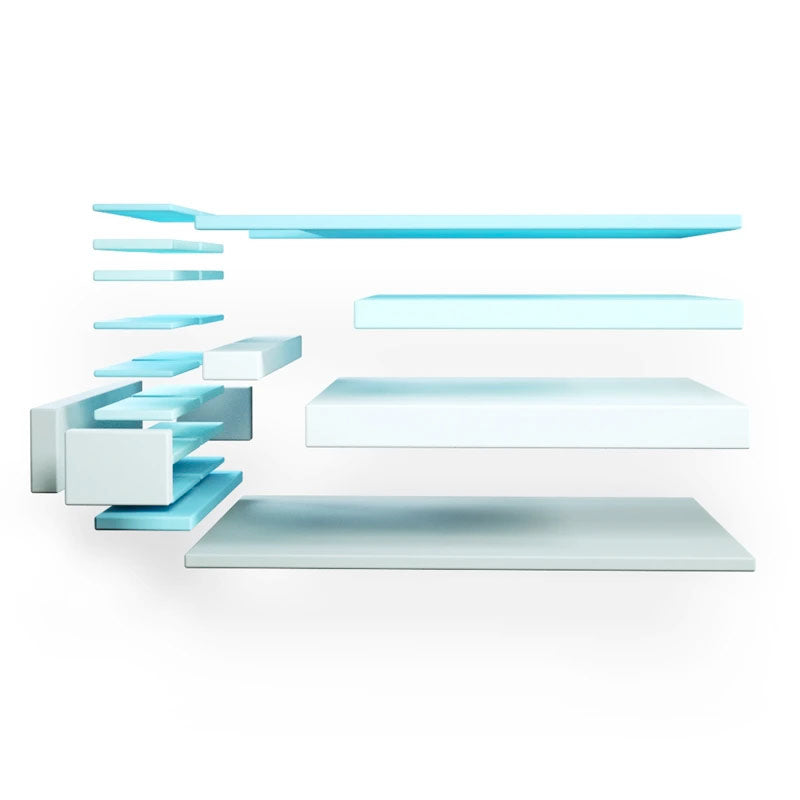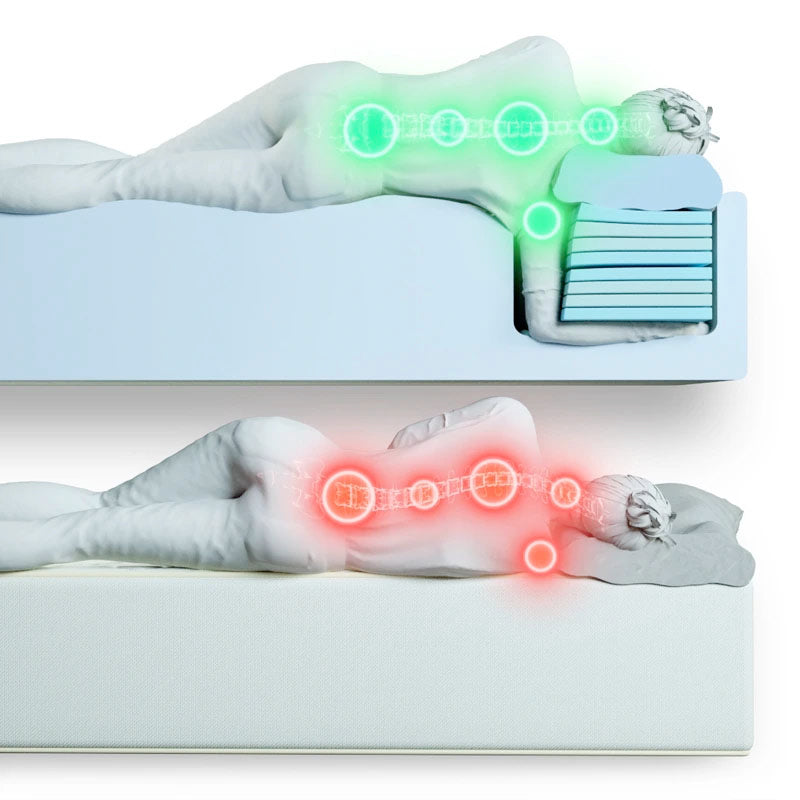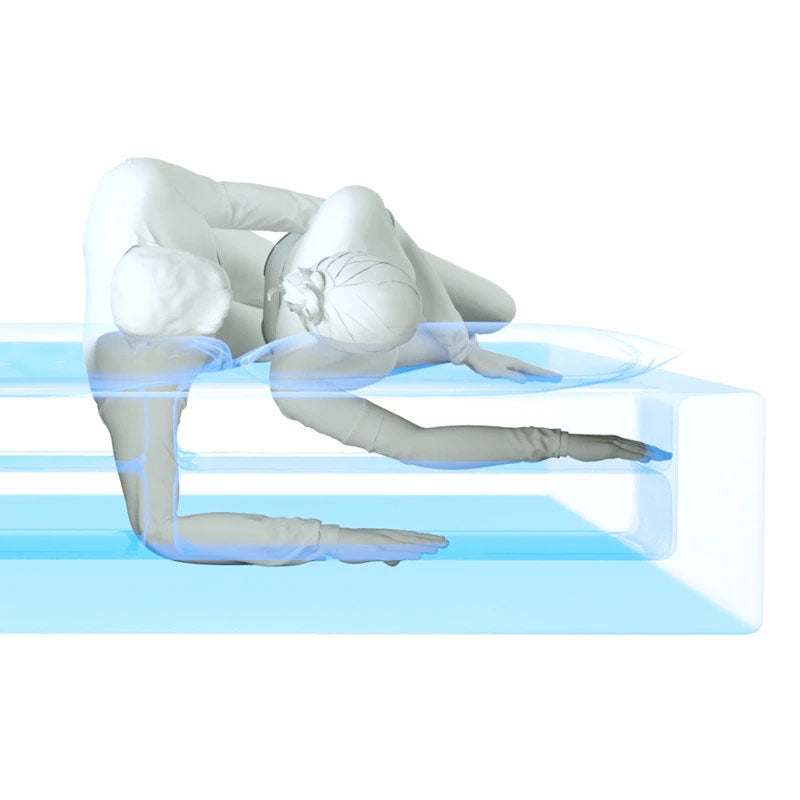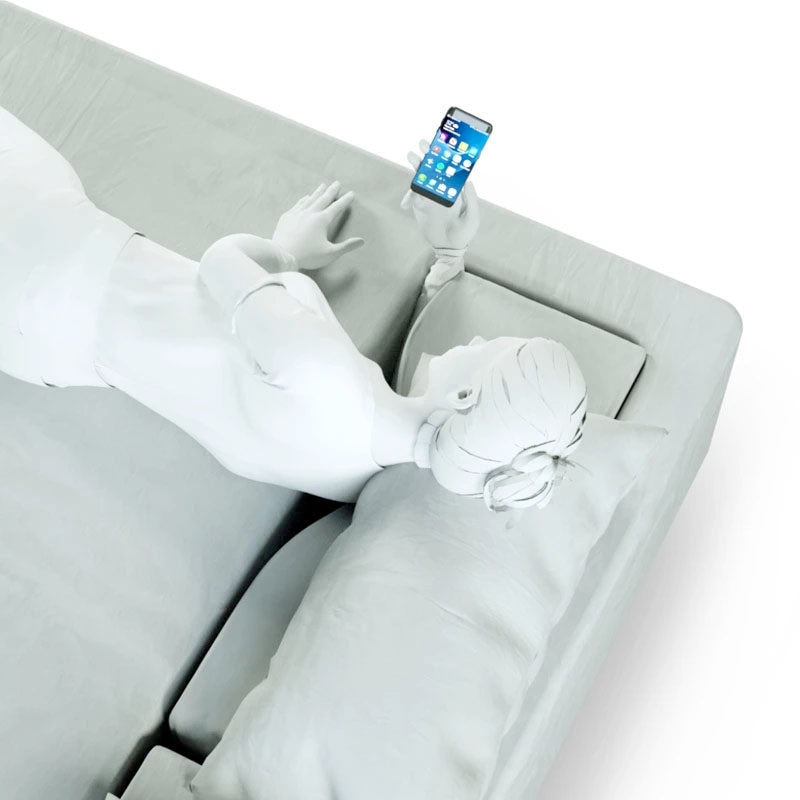If you’ve had a breast augmentation, your doctor should give you a list of post-op instructions to follow about caring for yourself after surgery. This list should include information about how you need to sleep after breast augmentation.
One of the most common things doctors tell you to do after these surgeries is sleep on your back during early recovery. This helps you avoid damaging your breasts post-op and causing yourself further pain and discomfort.
For side sleepers, transitioning to sleeping on your back might be hard at first. Not to worry — you will eventually be able to sleep on your side again.
The following guidance will inform you how to take care of yourself after surgery so that you can eventually go back to sleeping in your preferred position — and how SONU can help make your recovery just a little easier.
How Should I Transition to Back Sleeping for Recovery?
Getting used to sleeping on your back might feel like a difficult task if you are a side sleeper — but it doesn’t have to be.
You should not wait until the last minute to learn how to sleep in a different position, especially one that you’ll need to sleep in for recovery after surgery. A few weeks before your surgery, practice sleeping on your back so that you can find the most comfortable position before your procedure.
It will be several weeks post-op before you can transition back to sleeping on your side. Getting used to being a back sleeper ahead of time will save you time and frustration.
You might be in a lot of pain, so getting your sleep position right is one of the first steps you might want to take for the sake of your recovery.
What Can Aid Breast Augmentation Recovery?
Recovery can look a little different from person to person, but there are a few things that might make the process just a little easier.
Have Someone Help You
After surgery, even doing the bare minimum may be hard. You may feel exhausted, and trying to move around like normal might be a bit painful.
You will probably need some help, so ask someone close to you to check in on you. You might even need help bathing at first due to the pain from the surgery.
Let your helper drive you to and from appointments. You may be on pain medication that will cause you to be drowsy, so it might be unsafe for you to be behind the wheel.
Ask this person to help out with your household chores until you can safely pick them back up. If you have children, consider having a partner, family member, or close friend take care of them while you recuperate.
Medication and Bandages
After your breast augmentation or reduction surgery, your chest will be bandaged in gauze and dressed in support garments. These garments help minimize swelling as your chest heals.
Your surgeon may prescribe you pain medication or antibiotics to address any discomfort you may feel or treat or prevent infections. You may have bandages that need regular changing until the incision sites on your chest have healed. Some bleeding is to be expected for a few days after the procedure.
Limit Your Movements
Your doctor will likely instruct you to avoid certain movements. Movements like raising your arms or lifting heavy objects can be painful and may cause your stitches to tear. Swelling and soreness should subside after a few weeks.
Get Plenty of Rest
You will need to get plenty of rest after your surgery as your body recoups.
If you need to prop yourself up in bed, having additional pillows and a supportive bed can make it much easier for you to do so.
The SONU mattress from SONU Sleep features a patented Comfort Channel with four Support Pillows that fit inside of it, allowing you to adjust in any direction as needed. The SONU mattress also offers sink-in support thanks to a combination of foams, including a plush top layer of cooling serene.
Follow a Healthy Diet
After surgery, you will need to avoid heavy, unhealthy foods. Prepare in advance by loading up on foods that are light and easy to swallow. You might feel a bit of nausea post-op, so having something simple and easy on the stomach, like soup or yogurt, is ideal.
You will need to keep your body nice and hydrated during recovery. Drink plenty of water. Drinks with electrolytes, like Gatorade, are also a good choice. Avoid anything that is loaded with sugar.
You will need to conserve your energy while you are healing. Food that is good for you will keep you healthy and help you rebuild your strength.
When Should I Try Sleeping On My Side?
After a few weeks of sleeping on your back, ask your doctor if it’s okay to begin sleeping on your side again. Your doctor will assess whether or not you are healed enough to begin putting pressure on your side again by sleeping on it.
Sleeping on your side doesn’t have to be uncomfortable. The SONU Sleep System was created with side sleepers in mind, and it works to provide innovative pressure relief while you sleep. The SONU mattress also allows you to enjoy full range of motion of your arms below the surface of the bed, thanks to the patented Comfort Channel.
The SONU Sleep System can make it easier to transition back to side sleeping after recovery, and if you are ready to get the rejuvenating sleep of your dreams, SONU is here for you.
Conclusion
If you’re a side sleeper who is going to have a breast augmentation or reduction, be prepared to temporarily change your sleeping position. Consult with your doctor about what you can and cannot do post-surgery. They will be able to help you come up with a recovery plan and get you back to sleeping on your side in no time.
If you’re considering surgery, one of the best things you can do for yourself is to make sure you have an amazingly comfortable bed waiting for you when you get back. SONU Sleep’s cutting-edge mattress will allow you to recover in comfort and luxury.
Ready to learn more? Visit the SONU Sleep website today.
Sources
Breast Augmentation Recovery | American Society of Plastic Surgeons
Four tips for a healthy recovery after a breast augmentation | ASPS
Cosmetic breast surgery - discharge Information | Mount Sinai - New York






















